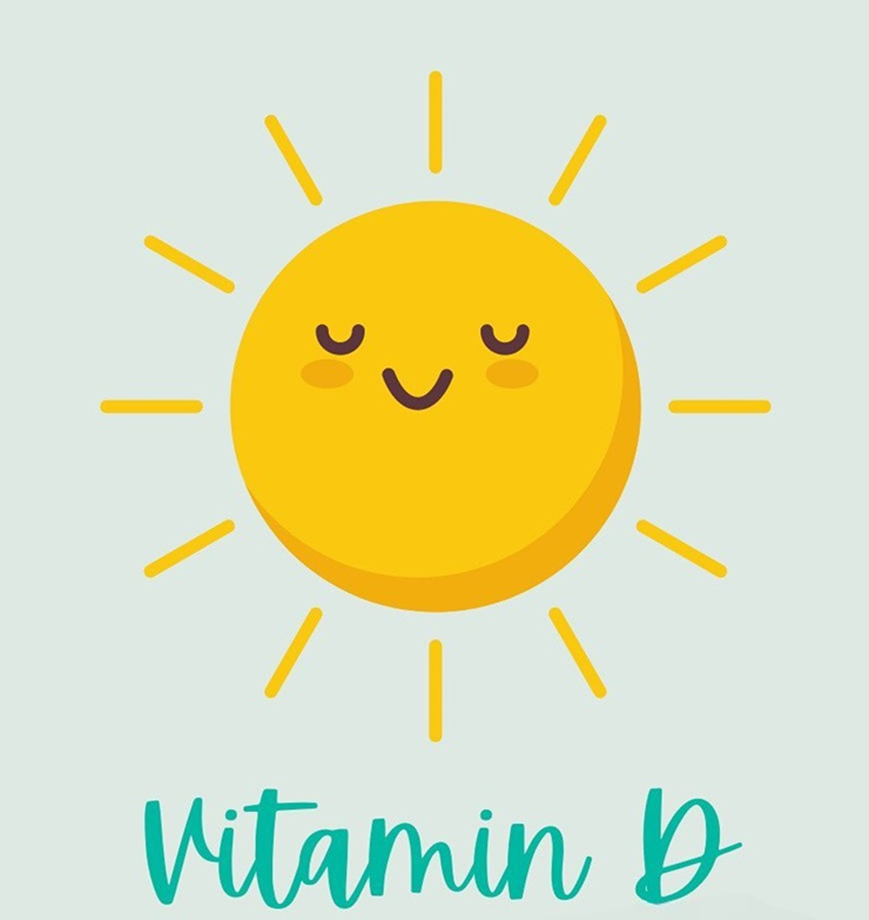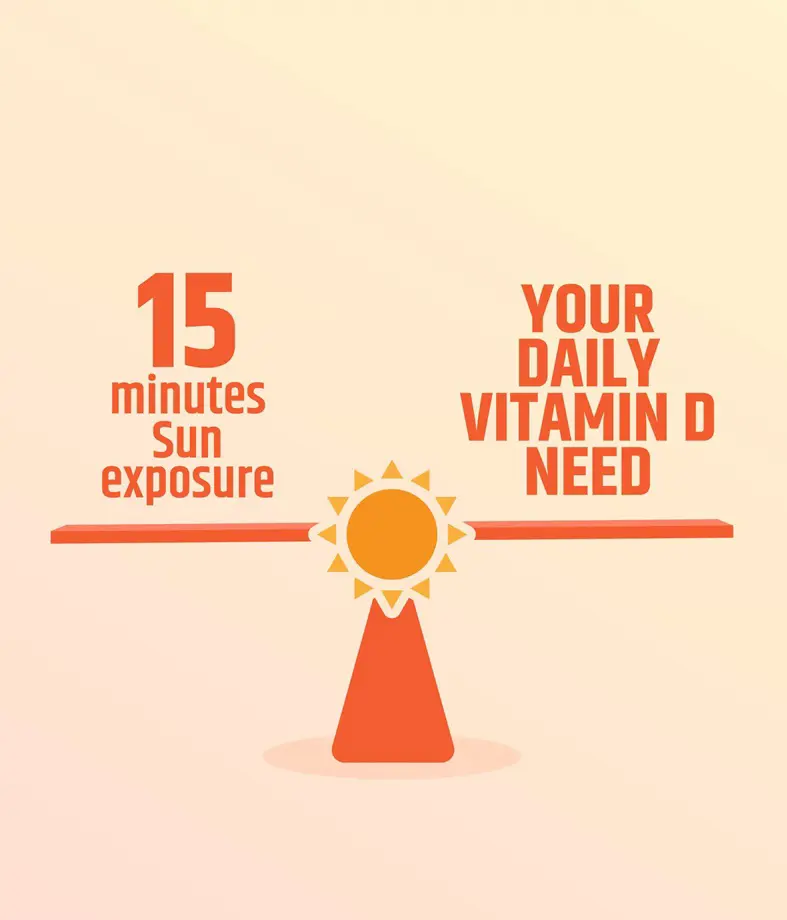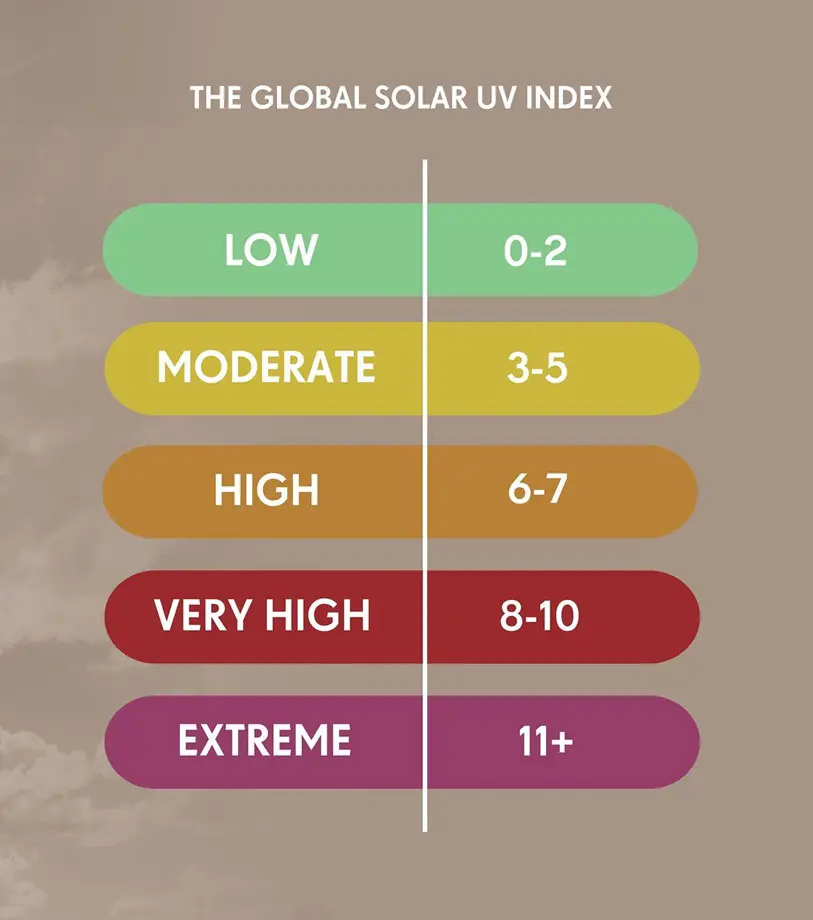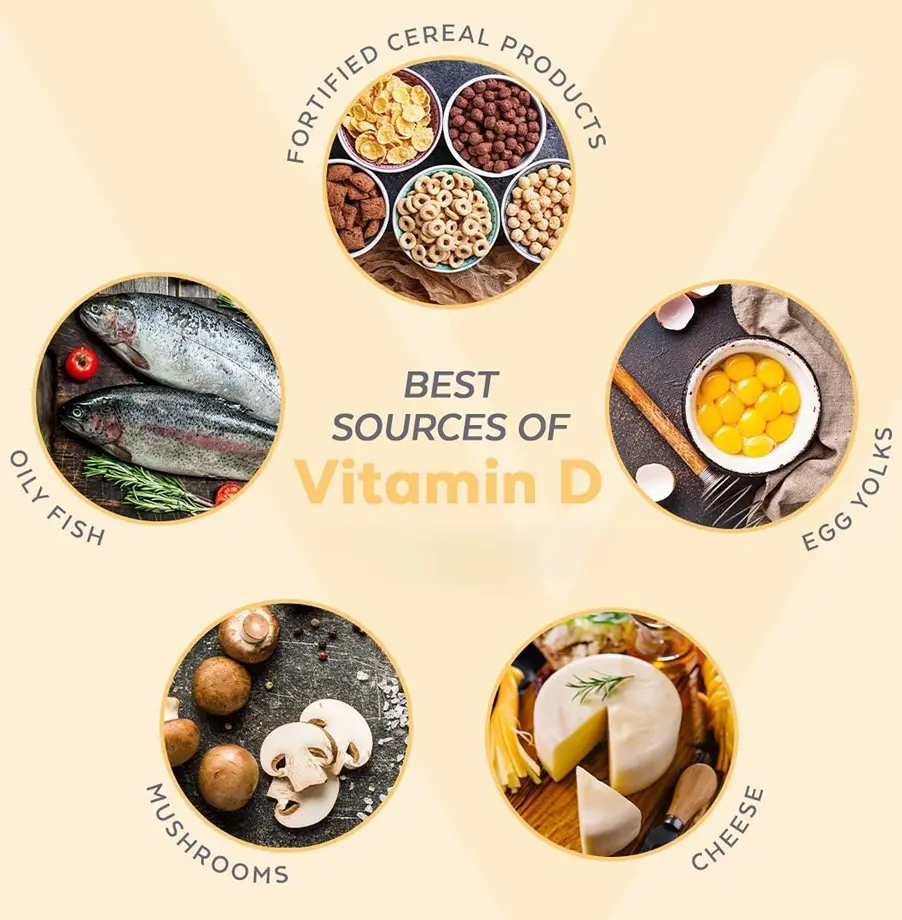How To Get Vitamin D From Sun?

This post may contain affiliate links. If you make a purchase through links on our site, we may earn a commission.
Vitamin D is an essential vitamin, meaning, if you don't get it from external sources there's a high chance you will have a vitamin D deficiency. Sun is one of the natural sources of vitamin D, but wait a bit, don't get confused, merely spending time in the sun won't get you the right amount of this vitamin.
There are many variables you should be considering, like skin tone and the geographical area one is residing in, if you are relying on sunlight as a source of this vitamin. Here, we will guide you in finding the right balance of these variables, also, remember that overdoing won't help as harmful UV rays from the sun are associated with conditions like skin cancer.
Sunlight and Vitamin D

While we hear more often about the harmful effects of the sun's UV radiation, including sunburns and skin cancer, there is another important side to the story. There are also beneficial effects of sunlight, the most important being its ability to stimulate the skin for vitamin D production.
Among three types of UV rays, UVA, UVB and UVC, varying in wavelengths, UVB is essential in vitamin D production. This information must not be misunderstood as people may conclude that soaking up hours of sun means sufficient vitamin D levels. Rather, what's important to know is that it's about the right balance which is determined by factors like timing, skin type and location.
Importance of Vitamin D
Vitamin D, as we have all heard of, is important to increase calcium absorption in the body, particularly in the intestine. To simplify, there are two forms of this vitamin, the one that we achieve mainly from plants is known as vitamin D2/ ergocalciferol and the other whose proper synthesis requires sunlight is vitamin D3/cholecalciferol.
Step-by-Step Production of Vitamin D

The process of formation of vitamin D when sunlight strikes the skin is considered a complex biochemical event. The precursor of vitamin D3 is present in an abundant amount in the outer layer of the skin, the epidermis. This precursor is what needs to be stimulated by the UVB rays for vitamin D production.
Initially synthesized in the liver and then transported to the skin via the bloodstream, the precursor compound makes 0.1% to 0.2% of the skin's total cholesterol content. The events that take place while synthesizing vitamin D are listed below:
Step 1: As already mentioned earlier, the skin compound called 7-dehydrocholesterol reacts with the sunlight. The UVB rays, upon interacting successfully with the compound, form previtamin D3.
Step 2: Now, it's time for the previtamin to change into vitamin D3 (cholecalciferol). This process does not occur immediately but rather proceeds with time.
Upon successful formation of D3, blood vessels transport it into the liver where it is further converted to calcidiol.
Step 3: The next crucial step occurs in the kidneys. Whenever there is a need for vitamin D in the body, this organ utilizing hormones converts calcidiol into calcitriol. Calcitriol hence is the final active form of vitamin D that the body utilizes.
Best Time To Get Vitamin D
Sadly, you can not get enough vitamin D at any time of the day. For effective sun exposure, the sun must be at peak which is around 10 am to 2 pm local time. The time of the day matters because during the peak hours, the UVB rays are most direct and intense. Outside of these hours, their ability to reach our skin traveling through the atmosphere is significantly reduced.
How Much Exposure Is Enough?

There is no one-size-fits-all rule for how much sun exposure is appropriate to produce enough vitamin D. To be precise, the "enough" amount of sun depends on several factors including skin tone of people, UV index, and even your geographical location. Let's have a closer look at each of these deciding variables.
Skin Tone
Skin type has a major role to play in the extent of sun exposure required for the formation of vitamin D in needed amounts. This is due to the difference in the number of melanin pigments in different skin types.
For people with darker skin, more amount of these pigments hinder the absorption of UVB, so, these individuals need a longer time of exposure as compared to the ones with lighter skin. Hence, melanin which works as sunscreen reduces the chances of rays hitting the precursor on the skin, making people with dark skin tones require 3 to 10 times longer exposure to sunlight to produce the same amount of vitamin D as someone with fairer skin.
As a general guideline, the length of time needed for each skin type (depending on the UV index) include:
- Fair skin: About 10 to 20 minutes of sun exposure.
- Medium skin: Around 20 to 30 minutes of sunlight exposure.
- Dark skin: People with darker skin tones may require 30 minutes to an hour or more of sunlight to produce the same amount of vitamin D.
UV Index

Not all kinds of sun is ok for vitamin D production. Based on the UV index scale, which measures the strength of the UV radiation from the sun, the time of sun exposure should be strongly determined.
For instance, a UV index of 3 or above is considered sufficient for significant vitamin D synthesis. At this level, you can get exposed to the sun for just 10 to 30 minutes depending on your skin type. However, people living in areas with consistently low UV indices such as areas far away from the equator and regions with cloudy, overcast, or frequent rain may need to depend on dietary sources or supplements to meet the required value.
A higher UV index, that ranges from 6 to 7 or more than 11+, observed in summer months or tropical regions, needs only a brief exposure for efficient vitamin D synthesis. Overall, getting under the sun after knowing the UV index can help you determine the extent to which you should enjoy it.
Geography/ Latitude
Geography and latitude also have a significant impact on how much vitamin D a body can produce. Living away from the equator means less exposure to direct sunlight which eventually can't help the body obtain the required vitamin D amount.
So, people living at a higher latitude might need to take extra steps to make sure they are not vitamin D-deprived. This situation even peaks around winter and fall as during colder months, UVB can't reach the earth's surface. Conversely, those near the equator generally have the advantage of more consistent sunlight throughout the year.
Other Factors Affecting Vitamin D Synthesis
There are other several environmental, lifestyle, and biological factors that play a significant role in how efficiently the body can synthesize vitamin D from sunlight. Some other key factors that affect vitamin D production are listed below:
Season

The change in the season means there is a shift in the angle of the sun's rays, related to the change in their strength as well. In the warmer months, the sun is higher in the sky as compared to that in fall and winter. The change occurs drastically in the regions that are farther away from the equator.
Also, for people living in areas with long winters, people may not get the sunlight for vitamin D production. In such cases, there are other sources of vitamin D people may rely on including foods and supplements.
Atmosphere- Clouds and Pollution

Clouds can block or scatter UVB rays, hence reducing their intensity. For overcast days, even if it seems sunny outside, the UV rays can't function fully and might require longer to get sufficient sun exposure for vitamin D production. In such cases, you may need to rely more on other sources.
Air pollution can also reduce UVB radiation. The particles present in the air, such as smog and dust, can scatter the sunlight. This is highly prevalent in urban areas with a high degree of pollution. As a result of this effect, the intensity at which UVB reaches the earth's surface decreases hence there is a high chance that people living in these areas experience vitamin D deprivation.
Uses of Sunscreen and Covering of Clothes
Sunscreens are meant to block the UV radiation from the sun. UVB, important for vitamin D production, is also blocked by sunscreen. Moreover, the higher the SPF (Sun Protection Factor), the more UVB rays are blocked.
The exact degree of reduction of UVB also depends on the amount of sunscreen that is being applied. This may be less worrisome as many studies have revealed that people don't use the amount of sunscreen as directed, and this is what protects people from vitamin D deficiency.
Also, if you are sitting in the sun with all the skin areas covered, then there is not a single chance that the skin gets penetrated by the sun. As a result, your body will not produce vitamin D from sunlight.
Age
Although not related to sunlight exposure, age also has an important role to play in vitamin D synthesis. This is due to the fact that as we age, we tend to lose the original skin structure and function. To be more specific, our skin becomes thinner and less efficient at producing the precursor compound required for vitamin D synthesis.
This can lead to a higher probability of vitamin D deficiency, which has been further proved by studies that show that people over the age of 65 are more prone to vitamin D deficiency-related disorders. Besides the change in structure, the inability of other organs to convert the intermediate compounds to the active form is also related with these disorders.
Area Of Exposure

The amount of vitamin D produced is directly related to the amount of area exposed to the sun. This is because more of the vitamin D precursors on the skin get to interact with UVB. Ideally, try exposing larger areas of your body including your arms, legs, back and abdomen for more vitamin D production.
If you are someone who prefers exposing smaller areas like hands and face then you should know that longer exposure is required to generate the same amount of vitamin D. Also, for meeting the required value, try to get that exposure during the peak hours when UVB rays are strongest. This typically means you should be out in the sun during midday.
Additional Vitamin D Sources

Vitamin D is an essential nutrient for the proper functioning of the body. To maintain your well-being, by meeting the required vitamin D value, you can include foods and supplements that are packed with vitamin D. Some of the dietary sources that can help you get vitamin D in suffice include:
Foods
In cases, when you can not get sufficient sun exposure, vitamin D (the D3 form) can also be obtained from different animal-based foods. Fatty fishes including salmon, mackerel, sardines and tuna are known to have this vitamin in a high proportion. If we look into the amount, surprisingly, just 100 grams of salmon has more than 600 IU of vitamin D, which is more than the daily required value.
Vitamin D is known to be present in the active form in these fishes. If you are a vegan or a vegetarian, fortified food products can help you get this vitamin.
Vitamin D2-containing foods can also be considered for meeting the daily required value of vitamin D. D2 is present abundantly in mushrooms and yeast-containing foods.
Supplements
In today's busy world, it's almost impossible for the majority of the population to get the required amount of sunlight exposure. In such cases, vitamin D supplementation can work wonders. Vitamin D supplements are generally recommended when individuals go through vitamin D deficiency.
The vitamin D supplement is available in both forms; vitamin D2 and vitamin D3, and can be even consumed by people who can not get enough vitamin D from sunlight because of geography or their age. The general recommended daily intake for vitamin D is 600 to 800 IU which can be met by taking enough dosage of these supplements.
Effects of Overexposure
In the name of getting proper sun exposure, we can not overlook the potential damages overexposure brings. UVA and UVB among the three rays produced by the sun are more dangerous and can damage the skin and body when exposure is excessive or unprotected. Some major health impacts caused by the overexposure to these rays include:
- Sunburn is the immediate effect of overexposure to the sun. It typically presents as red, painful, and inflamed skin, and in severe cases, it can lead to blistering.
- When there is chronic exposure to the sun, induces the signs of aging. Some such signs include wrinkles, fine lines, sagging, and age spots.
- The most severe effect of overexposure is the development of skin cancer. As a result of DNA damage caused by UV rays, this effect is observed.
Recent posts
Lifestyle
Lifestyle
How Much Omega-3 Per Day Is The Right Amount?
Omega-3 fatty acids are advantageous for so many aspects of health-from heart, brain to joints. So, "How much to add" can be a general query of many. To help you get through this, and to let you know the appropriate amounts needed depending on the ag...
Lifestyle
How Much Protein Should You Consume In a Day?
Protein is one of the macronutrients that are essential in the human body for tissue building, repair, immunity and hormonal balance. The Recommended Daily Allowance or RDA covers a daily protein allowance of 0.8 grams per kilogram of body weight wh...
Lifestyle
How To Fillet A Fish?
Nothing beats the deep happiness of filleting your own fish, but only if you have done it before. While beginners might find it challenging at first, the process becomes easier with the right guidance. Whether you are filleting with a fresh catch or ...
Lifestyle
How Much Fiber Do You Need On Your Diet?
Fibers are what keep our digestive system healthy. Many of us have heard the buzz about how fibers are important and how they keep "things moving", making these nutrients our gut friends. If after knowing all the basics, the amount of fiber to be add...
Lifestyle
Is Apple Cider Vinegar Good For Weight Loss? How To Use
Shedding those extra pounds is a tough task for all. And for individuals in this journey, looking for trends that have gained significant traction is not a new thing. One such trend that has caught the attention of many is the use of apple cider vine...
Lifestyle
How to Digest Food Faster? 11 Natural Ways To Improve
As we have stepped into the world of a more sedentary lifestyle, all of us are more prone to physiological disorders. One of the consequences of not getting exposed to proper exercise is a delay in the digestion rate. For people who are on desk jobs,...





